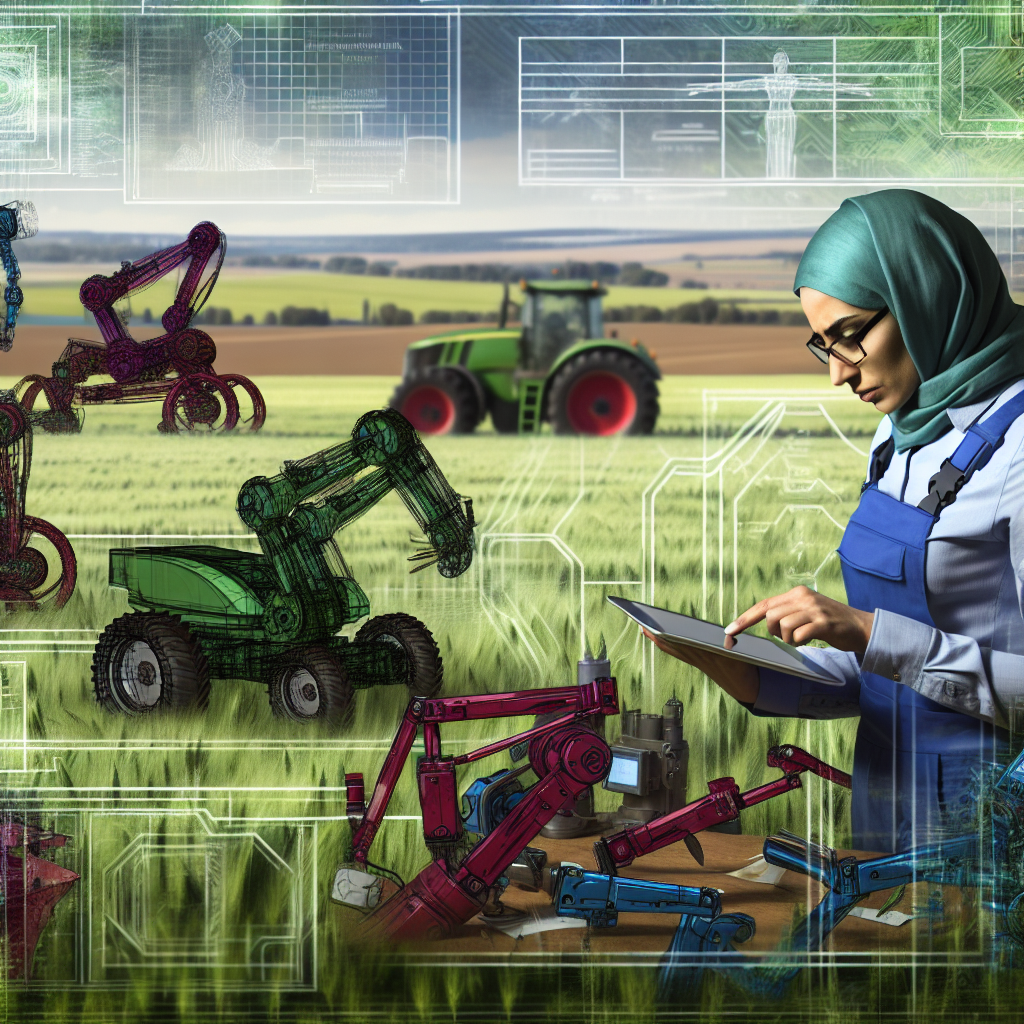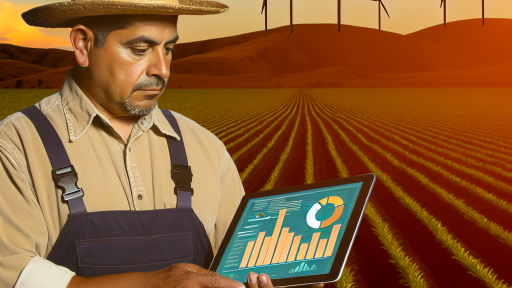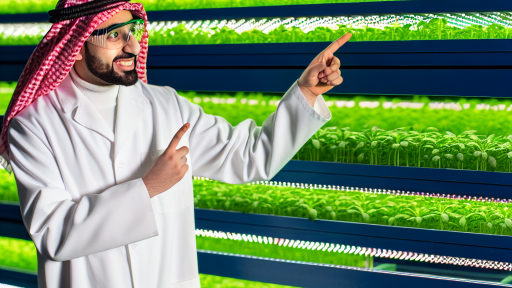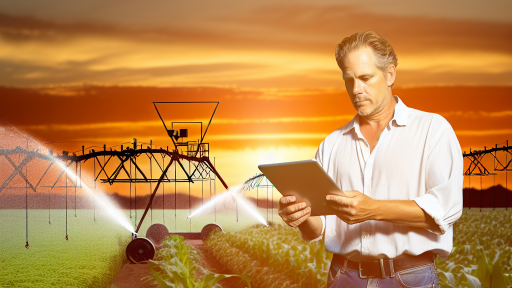Introduction to Agricultural Robotics
Agricultural robotics integrates advanced technology into farming practices.
This innovation aims to enhance productivity and efficiency in agriculture.
Farmers face increasing pressure to improve yields and reduce costs.
Robotics helps address these challenges by automating tasks.
The Role of Robotics in Modern Agriculture
Robots can perform various tasks, including planting, harvesting, and monitoring crops.
They often employ precision agronomy techniques for better resource use.
This technology can identify soil conditions and crop health accurately.
Consequently, farmers can make informed decisions based on real-time data.
Benefits of Agricultural Robotics
One significant benefit is the reduction of labor costs for farmers.
Additionally, robots can operate in environments that are challenging for humans.
This capability ensures continuous operation, increasing overall efficiency.
Moreover, agricultural robotics leads to improved crop management practices.
As a result, farmers experience enhanced productivity and profitability.
Challenges Facing Agricultural Robotics
Despite the advantages, agricultural robotics faces several challenges.
Initial investment costs can be prohibitively high for many farmers.
Transform Your Agribusiness
Unlock your farm's potential with expert advice tailored to your needs. Get actionable steps that drive real results.
Get StartedMoreover, there is a need for skilled personnel to operate and maintain these systems.
Additionally, farmers must adapt to rapidly evolving technologies.
Lastly, regulatory hurdles can slow the adoption of robotic solutions.
Overview of Common Challenges Faced in Agricultural Robotics
Technological Limitations
Many agricultural robots struggle with navigating complex terrains.
This limitation affects their efficiency and performance significantly.
Moreover, sensors may not always achieve accurate readings.
Consequently, robots fail to identify crops and weeds properly.
Additionally, robotic systems often require regular software updates.
These updates can cause temporary disruptions in operations.
Cost Considerations
Investing in agricultural robotics can be prohibitively expensive.
This high cost discourages many small and medium-sized farmers.
Furthermore, maintenance expenses add to the financial burden.
As a result, farmers may hesitate to adopt such technologies.
Integration with Existing Systems
Integrating new robotic systems with legacy equipment is challenging.
This often requires additional resources and time.
Farmers may find it difficult to train staff on new technologies.
Consequently, the transition period can lead to temporary productivity losses.
Regulatory Hurdles
Regulations surrounding agricultural robotics continue to evolve.
Farmers must navigate various local and national laws.
This complex legal landscape can delay deployment substantially.
Additionally, new technologies often face bureaucratic resistance.
Such challenges can deter innovation in agricultural practices.
Adaptability to Environmental Changes
Robots must adapt to varying climate conditions and soil types.
This adaptability is crucial for successful operation.
Showcase Your Farming Business
Publish your professional farming services profile on our blog for a one-time fee of $200 and reach a dedicated audience of farmers and agribusiness owners.
Publish Your ProfileHowever, existing models may not perform optimally in diverse environments.
Moreover, the unpredictable nature of weather presents further challenges.
Farmers need reliable solutions that can handle sudden changes.
Public Perception and Acceptance
The public perception of agricultural robotics often varies.
Some individuals express skepticism about their benefits.
Farmers might also fear potential job losses caused by automation.
To gain acceptance, stakeholders need to address these concerns.
Education about the benefits of robotics can aid in changing perceptions.
Technological Limitations and the Need for Innovation
Current Challenges in Agricultural Robotics
Many agricultural robots face significant technological limitations today.
These robots often struggle with navigation and task execution in dynamic environments.
For instance, uneven terrain presents a challenge for mobility.
The lack of advanced sensors can impair their ability to detect obstacles.
Moreover, limited processing power affects their decision-making capabilities.
Importance of Research and Development
Investing in research and development is crucial for overcoming these challenges.
Innovative technologies can enhance the performance of agricultural robotics.
For example, improvements in AI algorithms can allow better data analysis.
Such advancements lead to more precise and efficient tasks.
Additionally, new sensor technologies can significantly boost operational capabilities.
Collaboration Across Sectors
Collaboration between academia and industry can accelerate innovation.
Partnerships can drive research on cutting-edge technologies.
For instance, universities can provide the theoretical knowledge.
Industry players can offer practical insights into real-world applications.
This synergy promotes the development of effective solutions.
Future Directions in Agricultural Robotics
The future of agricultural robotics depends on continuous innovation.
Emerging technologies such as machine learning hold great promise.
Moreover, advancements in robotics can enhance scalability in farms.
This can lead to increased sustainability and productivity.
Ultimately, a focus on overcoming existing limitations will shape this industry.
Discover More: Boosting Crop Yields with Remote Sensing Tools
Economic Considerations
Cost-Benefit Analysis of Robotic Systems
A comprehensive cost-benefit analysis is essential for evaluating agricultural robotics.
This analysis examines initial costs, maintenance, and operational expenses.
Farmers must consider potential labor savings and increased efficiency.
Additionally, improved yield quality can justify robotic investments.
Initial and Ongoing Costs
The initial investment in robotic technology can be significant.
Cost factors include purchase, training, and integration into existing systems.
However, ongoing costs may decrease as technology matures.
Farmers should budget for regular maintenance and software updates.
Return on Investment
Assessing the return on investment (ROI) is crucial for farmers.
Robotics can enhance productivity and reduce labor costs over time.
ROI calculations should include both direct and indirect financial benefits.
Showcase Your Farming Business
Publish your professional farming services profile on our blog for a one-time fee of $200 and reach a dedicated audience of farmers and agribusiness owners.
Publish Your ProfileFor instance, better yields and fewer crop losses impact overall profits.
External Economic Benefits
Robotic systems also bring external economic benefits to communities.
They can create new jobs in technology and maintenance sectors.
Moreover, increased agricultural productivity supports local economies.
Increased efficiency often leads to more stable food prices.
Evolving Market Dynamics
The agricultural market is continually evolving due to technology.
Early adopters of robotics can gain a competitive edge.
Additionally, advancements may lead to new business models and opportunities.
Staying informed about trends helps farmers adapt their strategies.
Learn More: Wireless Sensor Networks for Smart Farming
Addressing Labor Shortages Through Robotics
Importance of Addressing Labor Shortages
Agricultural labor shortages pose significant challenges today.
Many farmers struggle to find workers during peak seasons.
Therefore, addressing these shortages becomes critical for productivity.
Robotics offers a viable solution to this pressing issue.
Adoption of Agricultural Robotics
Farmers increasingly turn to robotics for assistance.
These machines can perform tasks that were traditionally manual.
Automation enhances efficiency and reduces dependability on labor.
Implementing robotics leads to higher yields and profits.
Robots can work around the clock, unlike human laborers.
Types of Agricultural Robots
Several types of agricultural robots emerge in the market.
- Harvesting robots efficiently gather crops.
- Seeding robots ensure precise planting and distribution.
- Weeding robots reduce the need for chemical herbicides.
- Monitoring drones analyze crop health and field conditions.
Each type addresses specific agricultural needs effectively.
Challenges in Implementing Robotics
Despite the benefits, challenges exist in adopting these technologies.
Initial costs for robotics can be prohibitively high for some farmers.
Additionally, there may be a learning curve involved.
Farmers require training to operate complex machinery effectively.
However, investing in education ensures successful implementation.
Future of Agricultural Robotics
The future of agriculture looks promising with robotics integration.
As technology advances, robotics will become more accessible.
Farmers can expect improved performance and reduced costs.
Ultimately, robotics has the potential to revolutionize agriculture.
By addressing labor shortages, they pave the way for sustainable growth.
Explore Further: Automated Machinery for Organic Farming Practices
Integration of Robotics with Existing Agricultural Systems
Adapting Technology to Fit Current Practices
Integrating robotics into agriculture starts with understanding current practices.
Farmers must evaluate how robots can enhance their operations.
Additionally, the technology should complement existing tools and methods.
Training sessions can help farmers understand the new systems.
Moreover, collaborating with tech developers fosters innovation.
Collaborative Approaches for Successful Implementation
Partnerships between farmers and tech firms promote shared goals.
These collaborations facilitate the development of specialized solutions.
For instance, a joint project between GreenTech Robotics and local farmers showed successful results.
Showcase Your Farming Business
Publish your professional farming services profile on our blog for a one-time fee of $200 and reach a dedicated audience of farmers and agribusiness owners.
Publish Your ProfileSuch partnerships allow for real-world testing of robotic systems in the field.
Furthermore, farmer feedback ensures that designs meet practical needs.
Ensuring Seamless Integration
The integration of robotics requires thoughtful planning and execution.
Start by identifying specific tasks that can benefit from automation.
A common focus includes planting, harvesting, and pest control.
Next, evaluate existing machinery compatibility with robotic systems.
Additionally, proper training and support are crucial throughout the transition.
Addressing Technical Barriers
Technical barriers can hinder the adoption of agricultural robotics.
Limited access to technology remains a significant challenge.
Further, understanding and managing data can complicate operations.
Investing in educational programs can overcome these hurdles.
Additionally, government subsidies may help farmers access advanced robotics.
Driving Future Innovations
Continuous innovation in agricultural robotics is vital for future growth.
Farmers should maintain an open mindset towards new technologies.
Participating in pilot programs helps organizations test emerging robotics.
Moreover, the advancement of AI will enhance robotic capabilities.
Ultimately, embracing change will lead to more productive agricultural practices.
See Related Content: Optimizing Space Utilization with Vertical Farming Tech

Regulatory and Safety Challenges in Deploying Agricultural Robots
Understanding Regulatory Frameworks
Regulatory frameworks for agricultural robots are still developing.
Many countries lack clear guidelines on these technologies.
As a result, companies face uncertainties in compliance.
Consistent regulations promote safer deployment and innovation.
Emerging technologies require adaptive regulatory measures.
Addressing Safety Concerns
Safety is a primary concern in agricultural robotics.
Operators must ensure the safety of both humans and machines.
Incorporating safety features can mitigate risks effectively.
A comprehensive risk assessment is essential before deployment.
Moreover, training staff to use robots safely is crucial.
Engaging with Stakeholders
Collaboration with stakeholders enhances regulatory compliance.
Farmers, regulators, and technology developers must communicate effectively.
Regular feedback from users aids in refining safety measures.
Stakeholder engagement fosters a shared understanding of risks.
Ultimately, this leads to better regulatory outcomes.
Adapting to Technological Change
Technological advancements outpace current regulations.
Compliance measures must evolve alongside innovative technologies.
Flexibility in regulations encourages experimentation and adaptation.
Industries should advocate for progressive regulatory frameworks.
By doing so, they can facilitate the growth of the agricultural robotics sector.
Case Studies of Successful Implementation
RoboFarm Solutions
RoboFarm Solutions implemented drones for crop monitoring in California.
This technology improved yield predictions by 20 percent in the first year.
Showcase Your Farming Business
Publish your professional farming services profile on our blog for a one-time fee of $200 and reach a dedicated audience of farmers and agribusiness owners.
Publish Your ProfileFarmers used real-time data to make informed decisions.
Consequently, they reduced pesticide usage significantly.
AgriBot Innovations
AgriBot Innovations launched autonomous tractors in Oklahoma.
These tractors improved efficiency by executing tasks without human intervention.
Farmers noted a 30 percent decrease in labor costs within six months.
Moreover, they were able to cultivate larger areas in less time.
SmartGreenTech
SmartGreenTech introduced robotic systems for greenhouse management.
The robots managed watering, fertilizing, and harvesting processes.
As a result, plant growth rates increased dramatically.
Greenhouse operators appreciated the reduced need for manual labor.
Lessons Learned from Implementation
Embrace Technology Gradually
Farmers should start with small-scale trials before full deployment.
This approach allows them to learn and adapt without major risk.
Additionally, gradual adoption fosters confidence in new technologies.
Importance of Training
Training staff on new technologies is crucial for success.
Well-trained employees can maximize the benefits of innovations.
Furthermore, ongoing support ensures teams are up to date with best practices.
Integration with Existing Systems
Successful cases show the importance of integrating new tools smoothly.
Technologies should complement existing farm management systems.
This integration helps streamline operations and improves efficiency.
Moreover, it reduces resistance to change among staff.
Future Considerations
Data Security Needs
As agricultural robotics use increases, data security becomes vital.
Farmers must safeguard sensitive information against cyber threats.
Investing in cybersecurity measures will protect their interests.
Sustainability and Environmental Impact
Future innovations should focus on sustainability.
Robots should minimize chemical use and waste production.
Moreover, they must promote eco-friendly farming practices.
Regulatory Compliance
Farmers need to stay informed about changing regulations.
Compliance with laws ensures smoother operations and less risk.
Additionally, it can enhance the marketability of their products.
Future Trends in Agricultural Robotics and Potential Solutions
Advancements in Technology
Robotics technology is rapidly evolving in agriculture.
This trend enhances farm efficiency and productivity.
Innovations in artificial intelligence drive the next generation of agricultural robots.
Moreover, sensor technology improves crop monitoring and management.
These advancements reduce the reliance on manual labor.
Automation Integration
Farmers are increasingly adopting automation solutions.
This integration streamlines various farming processes.
For example, automated planting and harvesting machines are gaining popularity.
Consequently, these tools help maximize yield while minimizing costs.
Furthermore, automation minimizes human error, enhancing precision in tasks.
Sustainability Initiatives
The focus on sustainable practices is growing among farmers.
Showcase Your Farming Business
Publish your professional farming services profile on our blog for a one-time fee of $200 and reach a dedicated audience of farmers and agribusiness owners.
Publish Your ProfileRobotic technologies aid in implementing these practices effectively.
For instance, drones reduce pesticide usage by targeting specific areas.
This approach further promotes eco-friendly farming methods.
Integrating robots into sustainable practices addresses environmental concerns.
Collaborations and Research Development
Partnerships between tech companies and agricultural institutions are on the rise.
Such collaborations drive research and innovation in agricultural robotics.
Furthermore, universities are developing programs to educate future engineers.
These efforts enhance the overall talent pool in agricultural technology.
As a result, the industry benefits from cutting-edge research and practical applications.
Challenges and Solutions
Despite advancements, challenges still exist in agricultural robotics.
For one, high initial investment costs can deter farmers.
However, financing options and grants can ease this burden.
Additionally, the lack of skilled operators presents another challenge.
Offering training and certification programs can bridge this gap.
Ultimately, addressing these challenges will enable widespread adoption of robotic technologies.
Additional Resources
Georgia Center of Innovation | Agricultural Technology Expertise
AgTech in Latin America: Small-scale solutions in a large-scale …




